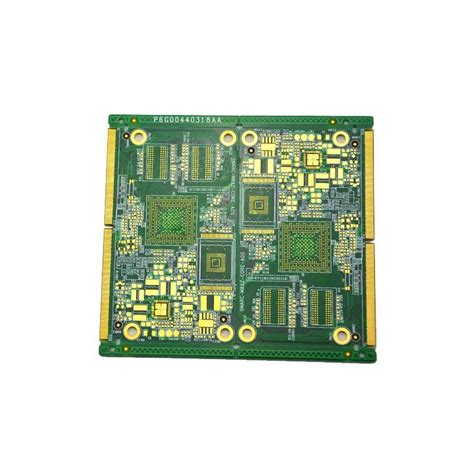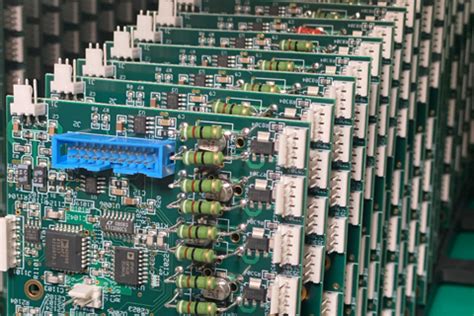Why Are Sensitive Traces Near PCB Edges Prone to ESD Interference?
Abstract
Electrostatic discharge (ESD) poses significant challenges to modern electronic circuits, particularly for sensitive traces located near printed circuit board (PCB) edges. This article explores the fundamental reasons why PCB edge traces are more vulnerable to ESD events, examining the physical mechanisms, field coupling effects, and design factors that contribute to this susceptibility. We analyze the electromagnetic field distribution around PCB edges, the role of reference plane discontinuities, and the effectiveness of various protection strategies. Practical design recommendations are provided to mitigate ESD risks for edge-running sensitive signals.
1. Introduction to ESD Susceptibility in PCB Design
Electrostatic discharge (ESD) represents one of the most common and potentially damaging threats to electronic systems. When examining ESD-related failures in PCBs, a clear pattern emerges: sensitive traces routed near the board edges demonstrate significantly higher susceptibility to ESD interference compared to similar traces located inboard. This phenomenon stems from multiple interrelated factors that collectively create an “ESD hot zone” along PCB peripheries.
Modern electronic devices continue to shrink in size while increasing in complexity and speed, making ESD protection more challenging. High-speed interfaces, analog sensor inputs, and other critical signals often require careful routing that sometimes necessitates edge placement due to connector locations or space constraints. Understanding why these edge traces are particularly vulnerable is essential for developing effective protection strategies.
2. Physical Mechanisms of ESD Coupling at PCB Edges
2.1 Field Concentration Effects
PCB edges create natural discontinuities in the electromagnetic field distribution. When an ESD event occurs near a board edge, the electric field lines concentrate at the sharp edge due to the sudden change in dielectric material (from PCB substrate to air). This field concentration effect can increase local field strength by factors of 10-100× compared to fields over continuous plane areas.
The field enhancement follows the principle of electrostatic field crowding at conductive edges, mathematically described by:
E_edge = E_0 × (1 + (t/r)^(1/2))
Where E_edge is the enhanced field at the edge, E_0 is the incident field, t is the conductor thickness, and r is the edge radius. This explains why thinner boards with sharper edges show worse ESD susceptibility.
2.2 Lack of Reference Plane Shielding
Traces routed near PCB edges often suffer from incomplete reference plane coverage. Unlike inboard traces that benefit from continuous ground or power planes above and below, edge traces typically have:
- No adjacent reference plane on the outer side (air interface)
- Truncated reference planes that may end before the board edge
- Discontinuities in return current paths
This incomplete shielding allows both electric and magnetic field components of ESD pulses to couple more efficiently into edge traces.

3. Transmission Line Effects and Impedance Discontinuities
3.1 Impedance Variations at Board Edges
Controlled impedance traces experience significant impedance variations when routed near board edges due to:
- Fringing Fields: Increased field lines terminating in air rather than reference planes
- Effective Dielectric Change: More fields in air (ε_r=1) versus substrate (ε_r=4-4.5 for FR4)
- Return Path Disruption: Reference plane edges force return currents to take longer paths
These impedance discontinuities (typically 20-40% variations) cause signal reflections that can amplify transient ESD energy coupling into the trace.
3.2 Common Mode Conversion
ESD events often inject common mode currents that flow along board edges. The lack of symmetrical reference structures near edges promotes conversion to differential mode signals in sensitive traces through:
- Asymmetric coupling to signal/return paths
- Uneven parasitic capacitances to surrounding structures
- Imbalanced series inductances in the return paths
4. Direct Discharge Pathways and Charge Accumulation
4.1 Increased Likelihood of Direct ESD Strikes
Traces near PCB edges are geometrically more exposed to:
- Direct arc discharges from fingers or tools
- Contact discharges during handling
- Near-field coupling from adjacent charged objects
Industry studies show edge traces experience direct ESD events 5-8× more frequently than inboard traces in typical applications.
4.2 Surface Charge Accumulation
Non-conductive PCB edges allow static charges to accumulate during handling. These charges can:
- Create local potential differences exceeding kilovolts
- Induce voltages on nearby traces through capacitive coupling
- Eventually discharge through microscopic air gaps or contaminant paths

5. Comparative Analysis: Edge vs. Inboard Trace Coupling
| Parameter | Edge Trace | Inboard Trace |
|---|---|---|
| Electric Field Coupling | High (5-20×) | Low |
| Magnetic Field Coupling | Medium (3-10×) | Low |
| Direct Discharge Probability | High | Very Low |
| Impedance Discontinuity | 20-40% | <5% |
| Reference Plane Completeness | Partial | Full |
| Common Mode Conversion | Severe | Minimal |
6. Mitigation Strategies for Edge-Sensitive Traces
6.1 Layout Best Practices
- Keep-Out Zones: Maintain minimum 3× trace-to-plane height from edges
- Guard Traces: Place grounded copper strips along edges
- Edge Plating: Implement full or segmented perimeter grounding
- Via Stitching: Create Faraday cage effects with high-density via fences
6.2 Stackup Optimization
- Extended Reference Planes: Allow planes to extend beyond signal layers
- Buried Traces: Route sensitive signals in inner layers near edges
- Dielectric Extensions: Use oversized core materials when possible
6.3 Component Placement
- Buffer Components: Place protection devices before edge routing
- Connector Design: Use recessed or shielded edge connectors
- ESD Suppressors: Implement TVS diodes with low clamp voltages
7. Case Study: USB Interface ESD Failure Analysis
A consumer device experienced 35% ESD failure rates during testing, traced to USB data lines routed within 1mm of the PCB edge. Modifications included:
- Rerouting traces 5mm inboard
- Adding 0.5mm guard traces with 2mm via spacing
- Implementing edge-connected ground pour
These changes reduced ESD failures to <2% while adding only 0.3mm to board width.
8. Conclusion
PCB edge traces represent a special case for ESD protection due to multiple vulnerability factors acting synergistically. The combination of field enhancement effects, reference plane discontinuities, impedance variations, and increased exposure creates a challenging environment for sensitive signals. Through careful design practices that address these fundamental mechanisms, engineers can successfully implement edge routing when necessary while maintaining robust ESD immunity. Future work may explore nano-coated edge treatments and active guard ring techniques for next-generation designs.







